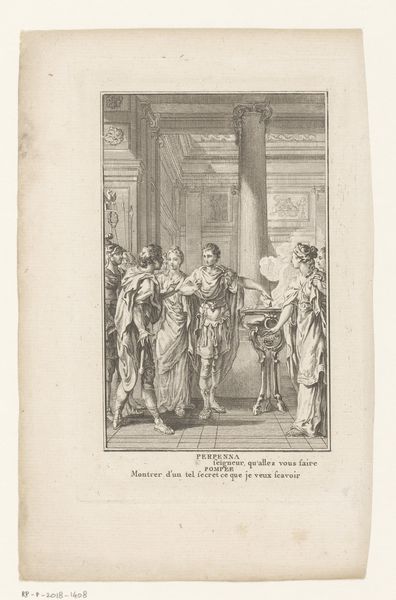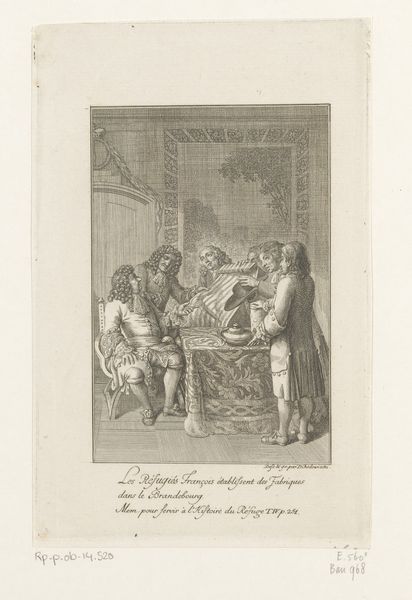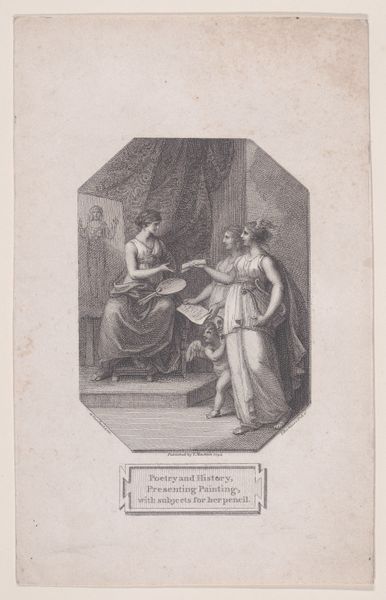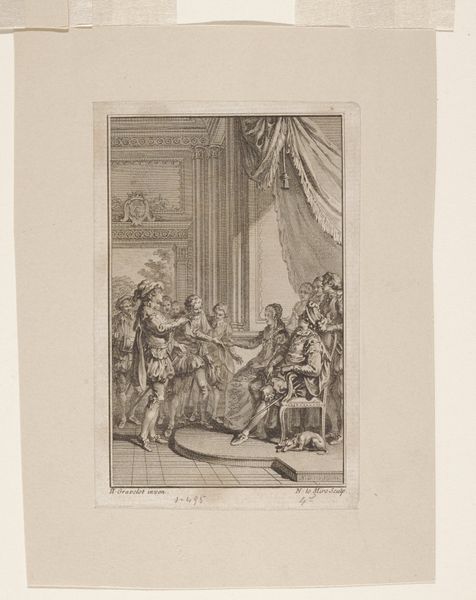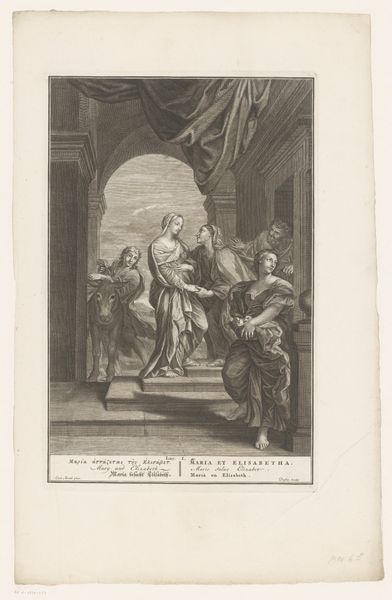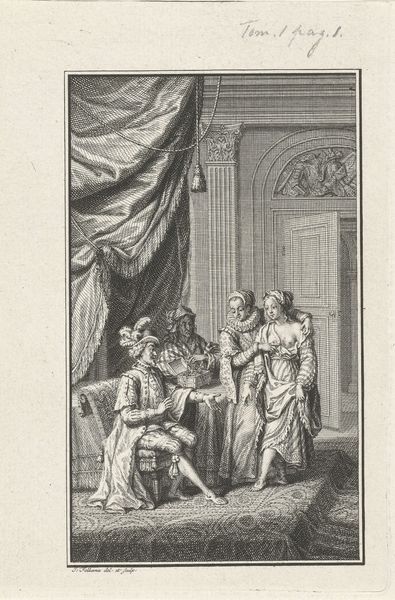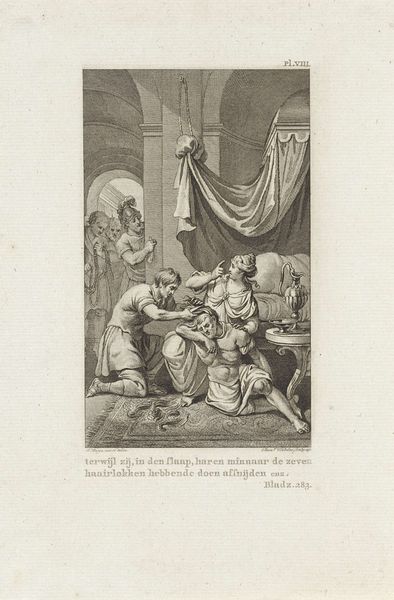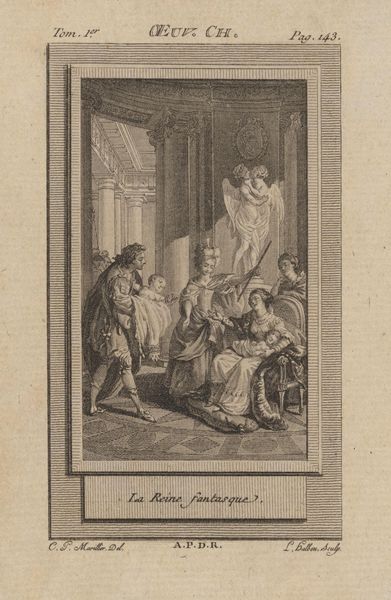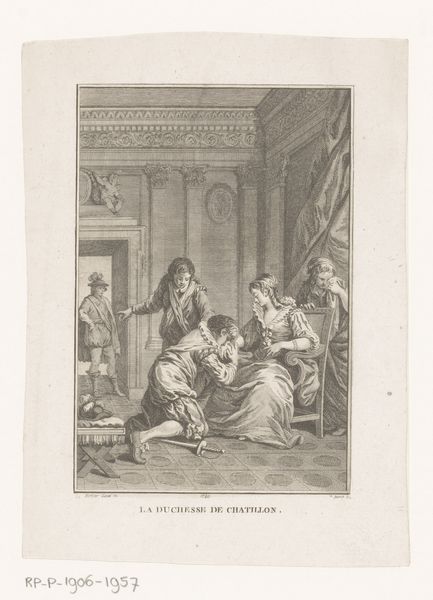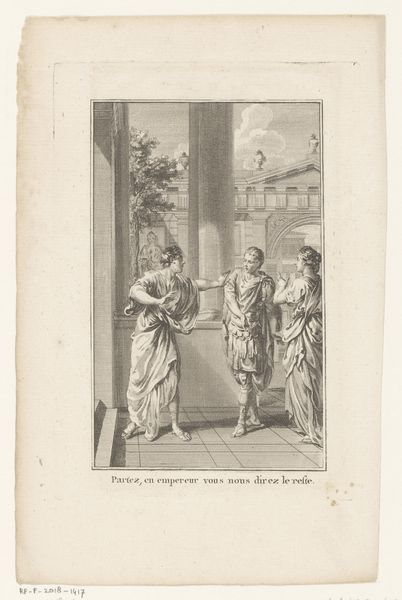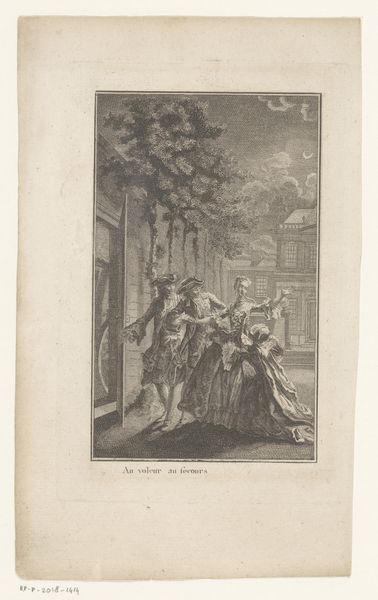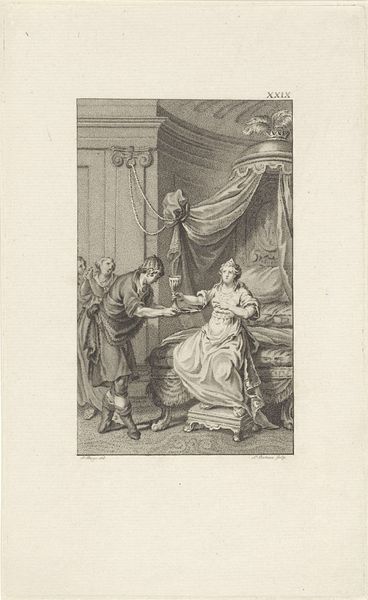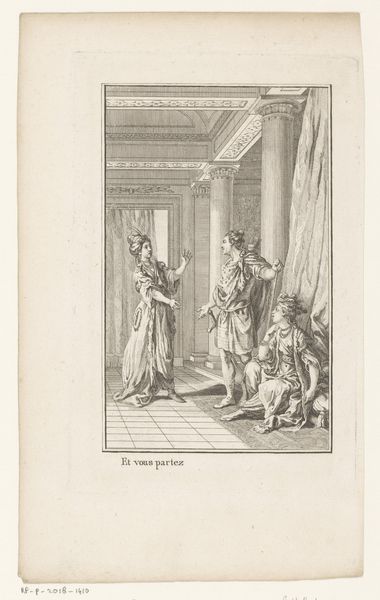
Dimensions: height 166 mm, width 108 mm
Copyright: Rijks Museum: Open Domain
Curator: Let's examine this print titled "Scène uit Sophonisbe met een boodschapper voor twee vrouwen," dating back to 1764, created by Joseph de Longueil. Editor: The stark contrast and the detailed linework give it a very formal, almost theatrical feel. You can feel the drama in this scene! Curator: Absolutely! The subject matter revolves around Sophonisba, a Carthaginian noblewoman, and it clearly leans into the dramatic narratives so favored in Baroque history paintings. Do you perceive certain repeating patterns? Editor: Definitely. Look at the materials themselves. The use of engraving as a process, a mechanical means of reproducing this image and story. And its themes are of social station. Curator: Right. And note how Longueil employs these distinct symbols that were important in Baroque history-painting, to imbue meaning and prompt the viewer to reflect on a historical or allegorical parallel, like her hand outstretched. Editor: And in such detail. I imagine the labor involved. We’re really thinking about production. These symbols gain greater clarity through material practices that we may take for granted. What of these two standing characters: do we sense any shift? Curator: Indeed, the standing characters appear to reinforce each other: the woman standing beside Sophonisba offering a form of silent support; conversely, the messenger delivering perhaps dire news, disrupting Sophonisba's space. One could interpret his Roman military attire as a symbol of encroaching dominance. Editor: The material is in service to something outside the physical: an historical event represented in symbolic form. It forces us to confront the intersection of process and significance. Curator: Ultimately, viewing this print prompts one to reconsider how individual decisions intersect with larger political narratives that have persisted throughout art history. Editor: From my view, the artist really pushes us to confront the means of its own making, encouraging an understanding of how history itself comes into being through layers of production.
Comments
No comments
Be the first to comment and join the conversation on the ultimate creative platform.
